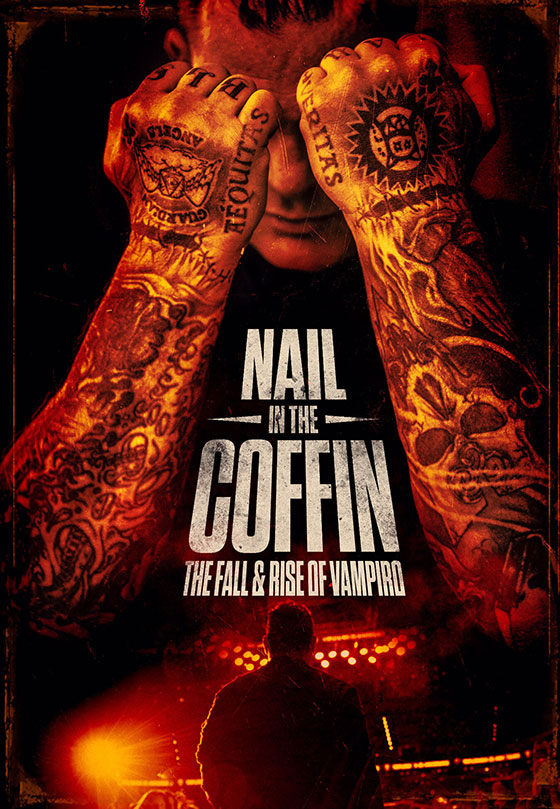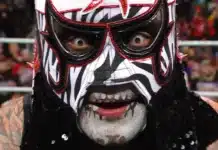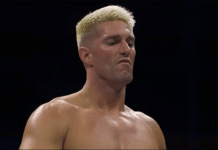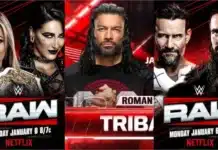
The sport of professional wrestling, for all of its forms and mutations, has remained a draw for fans around the globe. The spectacle, the drama, and the athleticism transcends any language barrier. From the time that Rikidozan laid the foundation for the genre along with Karl Gotch in Japan to El Santo’s status as a national hero in Mexico, as well as the territory system that stretched across the United States through organizations of regional promoters, the grappling arts continuously connected with its fans on an emotional level. The stories that played out inside the ring gave fans hope, heroes, and thrilling entertainment. There are a select few in the storied history of the industry that have been able to make that connection with the fans from all of the previously mentioned places, which saw their skills and charisma speak louder than any verbal communication. Certain performers have the ability to became stars and draw fans on an international platform, as their work overcomes any perceived cultural boundaries.
One such name is Ian Hodgkinson, a native of Thunder Bay, Ontario that became a legitimate national star in Mexico as Vampiro, exporting that fame to the United States and later Japan throughout a career that spanned over three decades. Along with his exploits around the wrestling world, the former “El Vampiro Canadiense,” as he was originally known during his heyday in Mexico, Hodgkinson remains one of the most intriguing and controversial figures in the business. Despite being the subject of previous documentaries and interviews, there’s still an unknown aura around the grappler that retains a level of mystic even without his trademark face paint.
Could anyone crack the code of Vampiro? More importantly, could someone discover who Ian Hodgkinson is?
Michael Paszt, a Canadian filmmaker with dozens of productions to his name, was willing to attempt to discover the man behind the myth after a coincidence meeting reconnected them in 2017. Similar to Ian, Paszt was a Canadian living in Mexico in the early-2000s, working as a reporter for the “Super Luchas” publication and thus had access to inner circle of figures involved in Lucha libre at the time. Over a decade and a half later, Michael saw his old friend again by chance during their travels and the seeds for a project were planted.
“I bumped into Vampiro at the Toronto airport and was amazed to learn that he was flying from Canada to Mexico City on a weekly basis, all the while trying to raise his teenage daughter by himself. That became the heart of my documentary. A father simply trying to raise his daughter the only way he knows how. I think a lot of people go in thinking it’s just another wrestling doc, but I wanted to focus on a father’s love for his daughter. Wrestling is the backdrop but the overall theme is family, Paszt explained.
The director knew he had a story, but with a subject like Vampiro, a performer as complex as he is accomplished, it wouldn’t be an easy task to try to peel back to the layers of the persona to reach the narrative that fans didn’t see on the surface. Paszt and his team spent nearly three years chronicling Hodgkinson’s life, a journey that took them to multiple countries and helped shape him into who he is as a man.
“My biggest challenge was the editing process. You can imagine shooting for three years and having a massive archive, we needed to get through the weeds. Finding our story was like threading a needle. We got that with Daniel Palmer. He edited a few episodes of Dark Side of the Ring, and he’s a brilliant story editor, Paszt added.
I went into this viewing experience very skeptical, simply because I watched other pieces on Vampiro in the past and they didn’t get beyond his on-screen persona. Were they entertaining? Sure, Vampiro’s charismatic deliver made for a good show, but those projects resulted in more sizzle than substance. There was also the matter that the ability to shoot footage is much easier with modern technology, and it becomes very convenient for someone to half-haphazardly slap together clips to call it a pro wrestling documentary. For the past twenty years, particularly since the release of “Beyond The Mat” in 1999, the term “professional wrestling documentary” was used as a buzz term to get fans to at least take a look.
Thankfully, “Nail in The Coffin:The Fall and Rise of Vampiro” is not a fluff piece.
As director Paszt mentioned, the focus of this feature is more Ian Hodgkinson the family man than Vampiro the professional wrestler. Within that narrative is the contrast and sometimes the conflict of that balancing act. Almost immediately, viewers are thrust into the dichotomy of Vampiro’s existence in Thunder Bay, a city near Lake Superior, and his role within the often chaotic world of lucha libre in Mexico City. Cameras find the legendary luchador, not in the ring, but behind the scenes as the lead producer for AAA’s biggest event of the year, Triplemania in 2017. The event promoted a famous mask vs. mask bout, a lucha specialty, between Psycho Clown and Dr. Wagner Jr., but became infamous for some incidents on the under card. As is now well-known, Sexy Star, a female wrestler that made some noise in the United States during her stint on Lucha Underground when the series aired on the El Rey network, intentionally injured Impact Wrestling star, Rosemary. At a level of unprecedented access, Paszt’s crew catches the aftermath and the heated argument behind the curtain. As Jeff Jarrett mentioned in an interview clip during this segment, hurting someone on purpose is a “cardinal sin in the wrestling business,” and the audience sees Vampiro tasked with trying to defuse the situation. Speaking of Double J, Triplemania that year was also the event where he showed up intoxicated in the ring, and subsequently entered rehab for substance issues. Cameras catch Jarrett belligerent backstage both before and after his match, as well as Vampiro being forced to restraint him to avoid a physical altercation with other wrestlers. I know this makes for “red meat” for a trailer, but I feel like this was extremely unfair to Jeff Jarrett because despite interview clips throughout the documentary that show him in healthy condition, there’s no mention that he successfully completed rehab and now works for the WWE as a producer in this film. Don’t get me wrong, Jarrett had to take responsibility for his own actions, but without the full story, which has a much happier conclusion, this segment comes off as a form of exploitation of someone that was clearly struggling, which wasn’t needed, as the central story is strong enough on its own to intrigue viewers.
Paszt notes that he later offered Jarrett the chance to address the unfortante incident when he was interviewed for the documentary after he successfully completed the rehabilitation program, but Double J decided to put the incident behind him, focusing instead on Vampiro’s tenure in America.
Highly recommend this truly special documentary, Nail in the Coffin: The Fall & Rise of Vampiro, directed by @michael_paszt on wrestling legend and father @vampiro_vampiro. It’s a definite must see guys! Avail digitally across the US and exclusively on @iTunes in Canada. pic.twitter.com/FZoWHDTzUo
— Trish Stratus (@trishstratuscom) September 15, 2020
On the flip side, the next shot sees Vampiro back in Thunder Bay, quietly discussing the ups and downs of his career. One of the most intriguing aspects here is when the audience is treated to a collection of footage of Vampiro in his initial run in CMLL in Mexico, including the original goth vignettes that introduced the vampire persona to the Mexican audience. An athlete throughout his youth, his frame looked suitable for wrestling. His pale skin, tattoos, and purple braids were such a contrast to anything the Hispanic fans saw previously that he stood out even in a world of super hero characters in the early-90s. It’s unfortunately that so many American fans don’t realize just how big of a star he was during this portion of his career in Mexico, appearing in movies and TV shows. The clips of Vampiro trying to get to the ring as female fans cling to him, and footage of him on main stream Mexican talk shows in his prime really illustrate just how popular he was at the time.
“Vamp was over like Warrior and very much for the ladies,” said Sam Panico, a 25-year pro and one of the most respected figures of the Pittsburgh area, especially for his extensive knowledge of Lucha Libre and Japanese wrestling.
But, how did Ian go from Thunder Bay literally across the continent to Mexico City as Vampiro?
One of the most interesting aspects of this production is that it takes Vampiro back to his childhood, where we see pictures of him as a highly-touted hockey prospect in his youth, and his mom as well as his sister discuss his early days. These segments give you a glimpse at Ian behind the charismatic shield of “El Vampiro Canadiense.” One of the more heart-breaking moments of this documentary is the revelation that Hodgkinson was the victim of sexual abuse by a priest when he was younger, and while he didn’t elaborate too much on it, you have to wonder if that trauma was a factor in some of the decisions he made later in life.
On a more positive note, Ian recounts his discovery of pro wrestling and punk rock respectively. In the early-80s, he saw a newly-formed massive tag team with face paint and a smash-mouth style called the Road Warriors demolishing opponents in the AWA. Around the same time, he was introduced to punk music while on a hockey trip by one of his fellow players. When he heard Sid Vicious wailing on a cassette tape, the distorted and energetic sound mesmerized him. Not long after, Ian bleached his hair to emulate the Sex Pistols front man and pursued music in a more serious fashion.
The details of how he eventually broke into the wrestling business are as unconventional as his in-ring style. He saw professional wrestling and punk rock as a slick as well as aggressive combination that complimented one another so he wanted to get his foot in the door somehow. By 1984, he more or less continuously showed up at the Montreal-based “International Wrestling” organization until he was allowed to work meager roles for the promotion. From there, Ian was introduced to the mafia syndicate in Montreal, and his stories of working for the group are wild. Knowing that collections for the Canadian mob wasn’t exactly the most promising career path, he jetted to Los Angeles on a whim, hoping to break into the music scene there. Again, the stories that he gets into during this portion of the production show just how remarkable of a life he had, even before he started a legendary wrestling career. His time working as a body guard for Milli Vanilli, the lip-syncing duo that swerved the music industry, make for some entertaining tales, too.
With LA being closer to the boarder, similar to how he showed up outside of venues in Montreal, the documentary explains how he did virtually the same thing in Mexico City and was basically picked from the group of athletes looking for work because of his unique look. Again, the match clips and segments here do a nice job of showing just how big of a star the Vampiro persona was during his heyday at Arena Mexico. TV shows, movies, concerts, talk shows, comic books, and many other avenues afforded to main stream stars were platforms that showcased the goth character. Granted, Vampiro wasn’t an expect technical wrestler, but he connected with the Hispanic fans on an emotional level through the energy and presence he brought to the ring, which is why he status within lucha libre is still a draw today.
However, we all know that the fast-paced physical performance of professional wrestling comes with its share of injuries, especially from the notoriously stiff lucha rings. Hodgkinson details a horrendous knee injury early in his career when he was scheduled to wrestle a second match that night, and instead of the follow-up match being cancelled, the doctor at the event drained his knee in the locker room and injected him with a pain killer, simply to get him through the next bout without any concern of how it might affect him beyond the final bell that evening. One of the most hard-hitting and harshest portrayals of this feature is when Paszt was allowed to follow modern day Vampiro to a doctor’s appointment where the physician adamantly tells the aging grappler that even one-off returns to in-ring competition could be disastrous to his health. In today’s wrestling when so much of the current style is based on more high risk than the past, Ian’s admission of over twenty concussions should serve as a precautionary tale.
One of the dynamics of the documentary is how Paszt wove Vamprio’s stellar career with its impact on the Ian of 2019. The part of that dynamic that might be more challenging than any opponent he ever faced inside the ring ropes, raising a daughter as she became a young adult. In my opinion, the most fascinating side of this presentation is how Ian shows such a genuine love for his daughter, Dasha, but unique challenges emerge based on his particular career path. After years in Mexico, Hodgkinson relocated back to Thunder Bay specifically to raise Dasha. But, as an active wrestler on the road for so many years, the two almost had to reacquaint themselves with one another, as far as living together on a full-time basis. It’s almost a comical moment when he goes from advising bloody luchadors to picking up the phone to advise his daughter to be ready for classes for the upcoming week.
There was also some archival-type footage from 2006, which I believe was originally shot for a lesser known show about Vampiro that lacked the production value and the direction of Paszt’s documentary. The Vampiro of 2006 finds himself in a park in Mexico City while a very young Dasha is on the playground. It’s amazing to see how time and specifically fatherhood over the course of Dasha’s life changed Ian’s prospective. There was a snippet from that earlier time when Vampiro was laughing about his previous addictions and didn’t seem too concerned about its long-term effects. You can tell by his current demeanor that he’s very concerned about his well-bell and the uncertainty of his future.
His World Championship Wrestling tenure was touched on briefly and while the way he was misused there didn’t necessarily merit much time anyway, I found it lacked some explanation of specific people that were discussed. For example, there was a reference to Vince Russo without any mention that he was the head writer of the company at the time and thus had major influence on the opportunities that were offered to wrestlers there. Considering it has been two decades since WCW folded, and this documentary has more of an appeal than just another wrestling show, some of the current viewers might not be familiar with the references made toward his WCW run.
Aside from the adventures of fatherhood, Hodgkinson wrestled with an issue that is a challenge for many sports figures, when to hang up the boots. Even when retirement seems like the only option, the adrenaline rush of the performance and the energy of the crowd remain alluring for athletes to compete one more time. Again, the contrast between parenting and pro wrestling is shown when Ian and Dasha sit down for lunch. While Ian stressed the importance of her education, his daughter questions why he continues to run himself ragged with trips to Mexico, the US, and then back to Canada. To put the inquiry in context, viewers see footage of Vampiro’s famous Lucha Underground match with Pentagon Jr, which introduced his opponent to American fans, while the contest reintroduced him to a new generation. Light tubes, thumbtacks, and fire just aren’t something that Ian Hodgkinson should’ve put his body through at that point so the attention it garnered during its original airing was more of a swan song than a sign of a comeback.
It’s reassuring to see some of his post-wrestling plans form, as he teaches Krav Maga self defense classes in Thunder Bay and works with the Guardian Angels in an effort to help the community. The crescendo of the documentary, and quite possible his life’s work doesn’t involve the lucha libre action, but rather Dasha’s high school graduation. Still true to his Vampiro style, Ian sports a gothic overcoat to the ceremony, as we see the grappler that endured chairs, fire, and glass in the ring, shed proud tears as Dasha’s name is announced for her official graduation. The sequence really encapsulates the heart of the documentary and quite possibly reveals the motivation of why Vampiro took on such a busy schedule over the past few years, despite his physical decline.
Vampiro joined @WIncDaily and gave an update on his mental and physical health.
More:https://t.co/iVGp6ZBwlj@vampiro_vampiro@HausRebel pic.twitter.com/6DybkFAYxU
— WrestlingINC.com (@WrestlingInc) September 13, 2020
As we roll to credits, we’re informed that Ian was diagnosed with early on-set Alzheimer’s disease and seeks treatment for it in Nevada. Dasha spoke very well throughout this feature and I believe she will have a successful career within her chosen field. As much as the film concluded on a somber note, it reinforced the very real physical price that is paid in the name of entertainment. Thankfully, since production wrapped on the project, Vampiro has said in recent interviews that his physical condition has improved and treatments for the early dementia have been effective. This presentation offers a little bit of everything because you have the intrigue of the origins of this mysterious persona, the sentimental moments of a family, and of course the insanity that can only occur within pro wrestling. More than anything, I think this is the most honest look fans have seen at the complex and controversial career of lucha libre star. Ironically, while this film will be marketed based on the popularity of the Vampiro, it’s much more a documentary about the man behind the persona, Ian Hodgkinson.
For several options on how you can watch Nail in the Coffin:The Fall and Rise of Vampiro, you can go to
https://epic-pictures.com/film/nail-in-the-coffin-the-fall–rise-of-vampiro
What do you think? Comment below with your thoughts, opinions, feedback and anything else that was raised.
Until next week
-Jim LaMotta
E mail [email protected] | You can follow me on Twitter @jimlamotta







